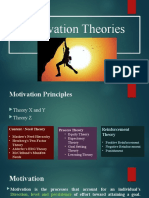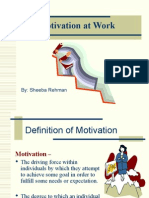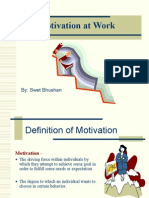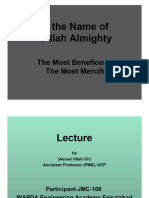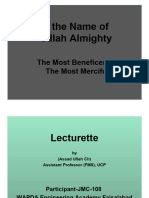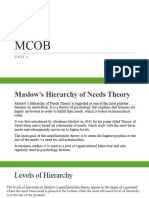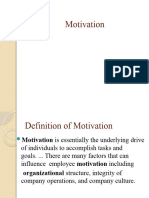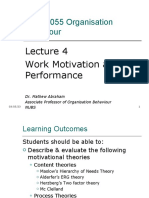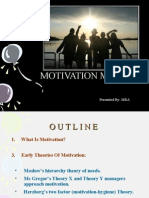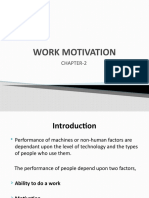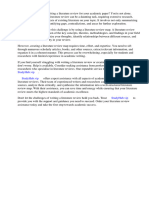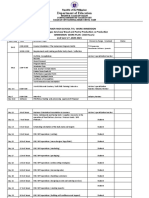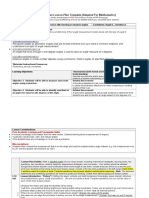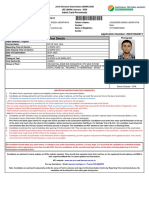0% found this document useful (0 votes)
9 views38 pagesOB Week 3 Motivation
The document discusses various motivation theories, including Theory X and Y, Maslow's Hierarchy of Needs, Herzberg's Two-Factor Theory, Alderfer's ERG Theory, and McClelland's Theory of Needs. It emphasizes the importance of understanding individual needs and the cognitive processes that influence behavior in the workplace. Additionally, it covers reinforcement theory and its application in enhancing job satisfaction through job design strategies.
Uploaded by
monica2930Copyright
© © All Rights Reserved
We take content rights seriously. If you suspect this is your content, claim it here.
Available Formats
Download as PPTX, PDF, TXT or read online on Scribd
0% found this document useful (0 votes)
9 views38 pagesOB Week 3 Motivation
The document discusses various motivation theories, including Theory X and Y, Maslow's Hierarchy of Needs, Herzberg's Two-Factor Theory, Alderfer's ERG Theory, and McClelland's Theory of Needs. It emphasizes the importance of understanding individual needs and the cognitive processes that influence behavior in the workplace. Additionally, it covers reinforcement theory and its application in enhancing job satisfaction through job design strategies.
Uploaded by
monica2930Copyright
© © All Rights Reserved
We take content rights seriously. If you suspect this is your content, claim it here.
Available Formats
Download as PPTX, PDF, TXT or read online on Scribd
/ 38
